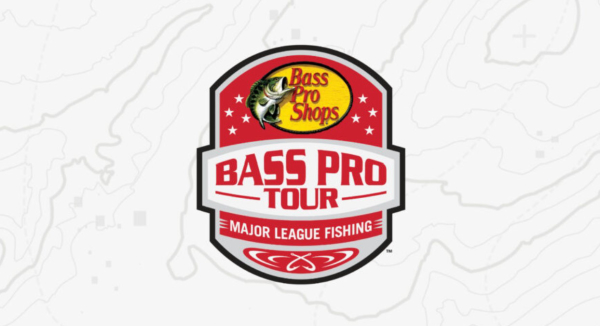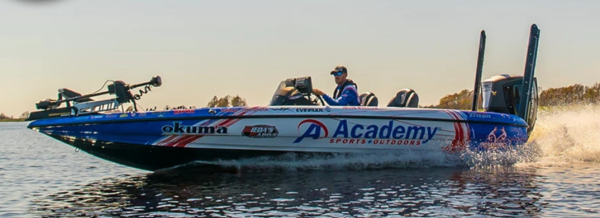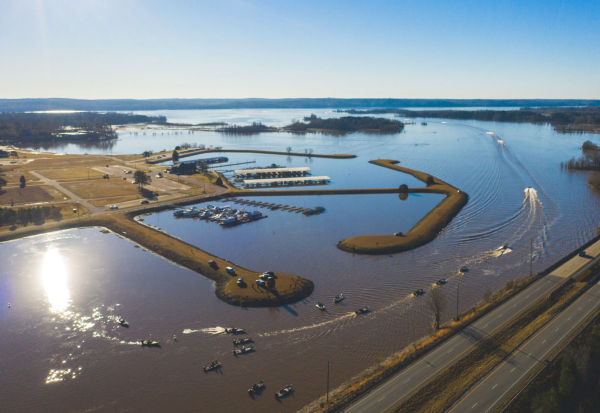
Changes are afoot for the 2026 season of Major League Fishing’s Bass Pro Tour, in which many of the sport’s best-known names compete. (MLF)
Major League Fishing’s Bass Pro Tour (BPT)has never shied away from shaking up the way professional bass fishing operates, and its latest move is no exception.
For 2026, the BPT circuit is cutting the field down to 51 anglers, reshuffling payouts, and promising a more “sustainable” model. The question hovering around the docks: does this mean the sport is booming, or does it reflect growing economic pressure on the concept of casting for cash?
On the surface, the payout adjustments look like a win for anglers who usually don’t wind up at the top of the heap. Instead of 20 anglers advancing to the Knockout Round, now 25 will move on — and every angler who makes it that far is guaranteed a check. In 2025, the cut-line checks paid $10,000. In 2026, they’ll pay $15,000, the highest minimum payout in bass tournament history.
That cushion matters. Travel, lodging, fuel, entry fees, and equipment can eat through prize money fast, especially for those who don’t regularly crack the top ten. The boats alone now cost over $100,000 including electronics, plus another $50,000 or more for a truck to tow the rig. The top anglers have these costs paid by sponsors, but those at the bottom often don’t. For a young pro trying to stay afloat, a reliable $15,000 payday can be the difference between continuing on tour or heading back to work at home.
The BPS format is unique in pro tournaments because there’s no entry fee, unlike nearly all other circuits where the winnings come out of the fees paid by the anglers.
But at the top, the story is different. Winners will now take home $125,000 instead of $150,000. This still remains the biggest single check in regular season professional bass fishing—the Bassmaster Elites pay $100,000--yet the drop hints at redistribution. The $25,000 trimmed from first place was spread across the lower cut-line, essentially trading flash at the top for stability at the bottom. That’s great news for the middle of the pack, and it probably won’t change the financial calculus for those banking on the life-changing headline payouts.

Top anglers like Jacob Wheeler get all their expenses paid by sponsors, but those farther down the ladder often struggle with the costs of boat, tow truck and travel. (MLF)
While MLF stresses that this was “an angler decision,” it’s hard to ignore the broader economics.
Tournament fishing is an expensive career. Fewer sponsors are writing six-figure deals, travel costs have climbed, and inflation has chewed into operating budgets.
Online video has become a major sales tool for just about every tackle company. An angler who can catch fish but can’t schmooze on camera is no longer much of a value to tackle and boat companies.
By narrowing the field to just over 50 anglers — the smallest in major-league history — MLF is creating exclusivity, but also reducing the number of professionals able to call this their full-time living.
For fans, a smaller roster could cut both ways. On one hand, every event will feature the absolute cream of the crop, the best 50 bass anglers in the world battling head-to-head. On the other, fewer slots mean fewer stories of up-and-comers fighting their way into the spotlight. That could make the circuit feel less accessible, less like the dream path for a weekend angler with aspirations of going pro.

Only the top 51 anglers on the MFL BPS circuit will compete in the events next year, but those finishing farther down the field can earn more money by making the cut. (MLF)
The other question is who benefits most. For the anglers in the BPT, the upside is predictability. More checks at meaningful amounts will help the rank-and-file survive a long season. But the founders and organizers also come out ahead. By trimming the field, MLF can cut overall payout obligations while touting record-setting minimum checks. The league has promised to invest an additional $250,000 into payouts, but with fewer anglers to support, the per-angler average looks much larger on paper.
Whether this restructuring represents growth or belt-tightening depends on your perspective. If you’re one of the 25th-place finishers now earning $15,000 instead of $10,000, it feels like progress. If you’re one of the few who regularly win the top spot, you may not agree. And if you’re an angler who didn’t make the cut into the 51-man roster, the new “most exclusive field ever assembled” feels less like an opportunity and more like a locked door.
Of course, MLF has eight other circuits for anglers not up to the BPT level in their abilities—these are more conventional events in which the anglers pay entry fees in return for a shot at the payouts—pay-to-play is in most tournaments, rather than a no cost invitational.
Professional bassing has suffered a bit the last few years with the advent of forward facing sonar, with which college age anglers are whipping many of the best-known names in fishing with decades of experience under their belt. This is good for young people entering the sport, perhaps, but not good for building endorsement value in long-established fishermen who fish based on experience in conventional techniques. Both FLW and B.A.S.S. have tweaked their rules to level the field a bit for 2026.
What’s clear is that the economics of professional bass fishing are evolving. MLF is betting that a leaner, more balanced payout structure will stabilize their version of the sport and keep more anglers in play. Time will tell if that stability builds momentum — or if it’s the first sign that the golden era of big-money bass tournaments is quietly contracting.
— Frank Sargeant
Frankmako1@gmail.com